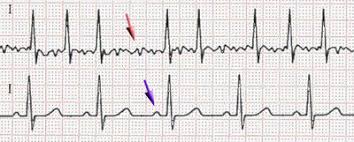
04 Jun Atrial Fibrillation Common After TAVR and Aortic Valve Replacement
MedicalResearch.com Interview with:
Rajat Kalra, MBCh
Cardiovascular Division
University of Minnesota, Minneapolis
MedicalResearch.com: What is the background for this study?
Response: New-onset atrial fibrillation after aortic valve procedures is thought to occur frequently after aortic valve procedures, such as transcatheter aortic valve implantation (TAVI) and surgical aortic valve replacement (AVR). However, the incidence estimates and implications of this new-onset atrial fibrillation in the contemporary era are unclear.
We sought to examine the incidence of atrial fibrillation after aortic valve procedures, compare the incidence between TAVI and AVR, and evaluate the associated morbidity and mortality implications using a ‘big data’ approach. This big data approach employed the National Inpatient Sample and was validated in the New York State Inpatient Database. Both are publicly available datasets that are developed as part of the Healthcare Cost and Utilization Project, a federal-state-industry partnership that is sponsored by the Agency for Healthcare Research and Quality.
MedicalResearch.com: What are the main findings?
Response: We found that the incidence of atrial fibrillation was ~50% in TAVI and AVR hospitalizations in the National Inpatient Sample cohort. The hospitalizations with new-onset atrial fibrillation had increased length of stay, odds of in-hospital stroke, and odds of in-hospital mortality. In our validation cohort, we found that new-onset atrial fibrillation occurred in ~15% of TAVI procedures and ~30% of AVR procedures. While the incidence estimates of new-onset atrial fibrillation were lower, the odds of in-hospital mortality were very similar in the validation cohort.
MedicalResearch.com: What should readers take away from your report?
Response: Atrial fibrillation is commonly associated with TAVI and AVR and has important morbidity and mortality implications. Clinicians should consider discussing the possibility of atrial fibrillation as a post-procedural complication as part of the shared decision-making process prior to aortic valve procedures.
MedicalResearch.com: What recommendations do you have for future research as a result of this work?
Response: New-onset atrial fibrillation is likely due to a combination of patient-based and procedural factors. Now that our group and others have highlighted the importance of peri-procedural atrial fibrillation, the next step for our field is to identify preventive strategies to limit the incidence of new-onset atrial fibrillation after aortic valve procedures and the associated morbidity and mortality burden. At this stage, may be difficult since many of these factors are not modifiable. However, the evolution of valve design and peri-procedural management strategies may offer important advances in atrial fibrillation prevention.
MedicalResearch.com: Is there anything else you would like to add?
Response: Our findings also reiterate the urgent need to find a balanced approach for peri-procedural anticoagulation for aortic valve procedures. This is an area that is already rife with debate in modern-day cardiovascular medicine, given the prognostic associations of atrial fibrillation that we (and others) have demonstrated and the emerging data regarding transcatheter aortic valve thrombosis.
Citation:
[wysija_form id=”3″]
[last-modified]
The information on MedicalResearch.com is provided for educational purposes only, and is in no way intended to diagnose, cure, or treat any medical or other condition. Always seek the advice of your physician or other qualified health and ask your doctor any questions you may have regarding a medical condition. In addition to all other limitations and disclaimers in this agreement, service provider and its third party providers disclaim any liability or loss in connection with the content provided on this website.
Last Updated on June 4, 2019 by Marie Benz MD FAAD
